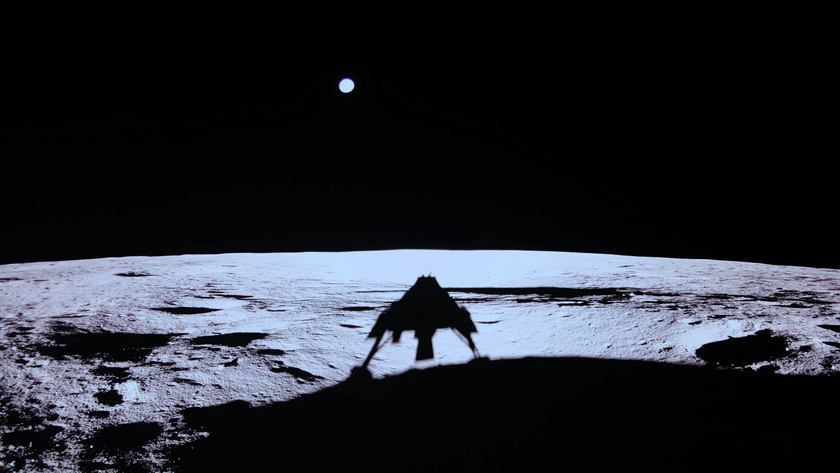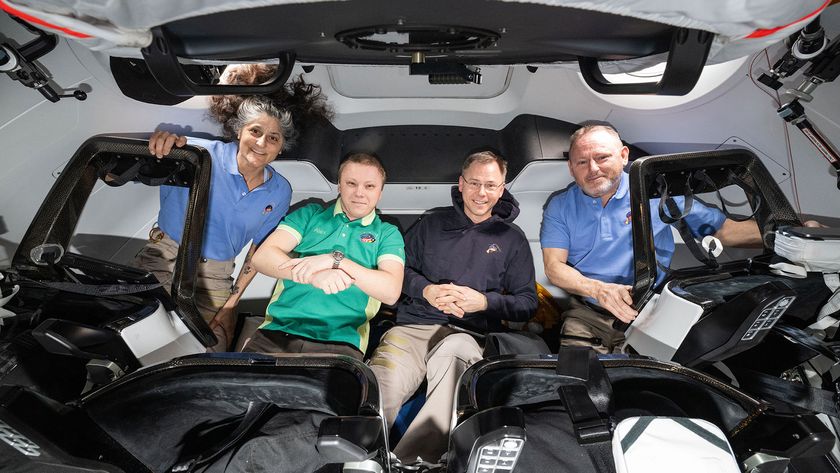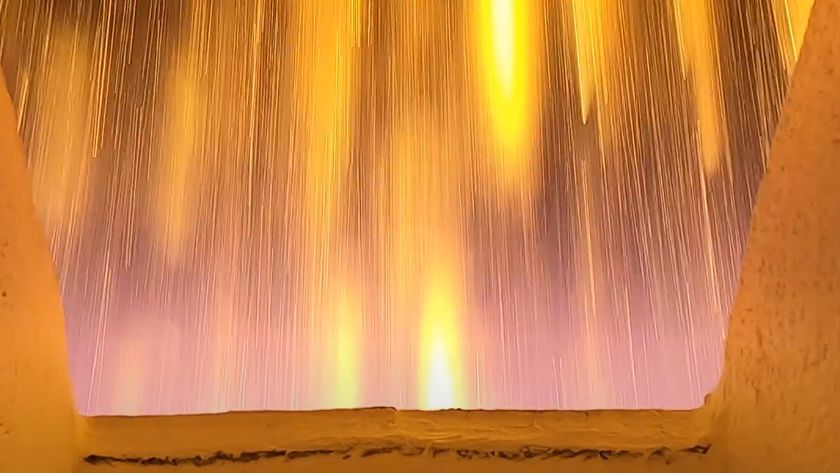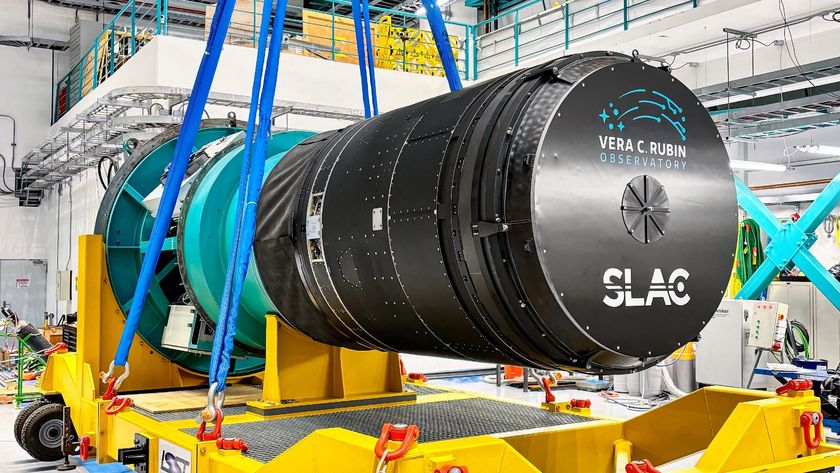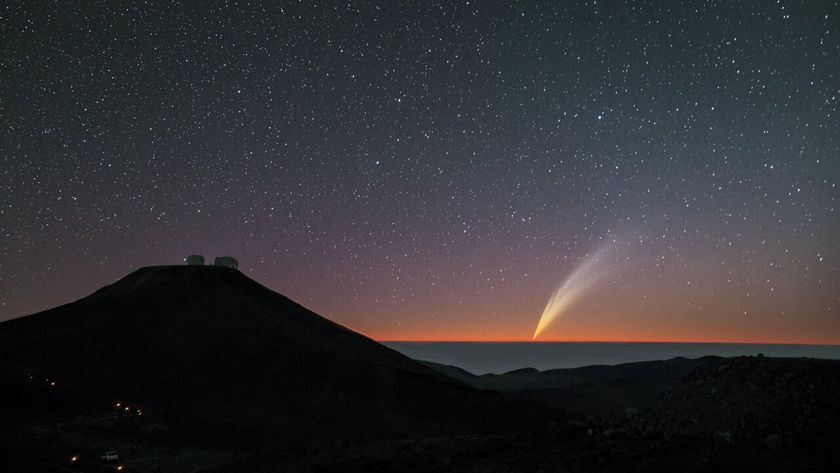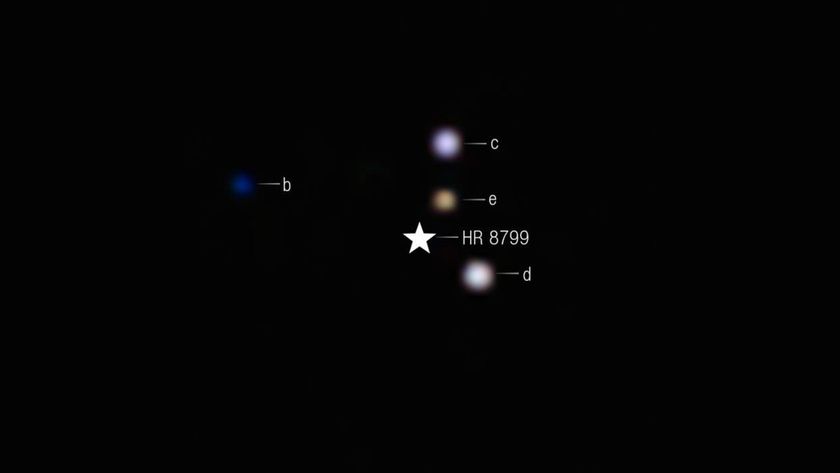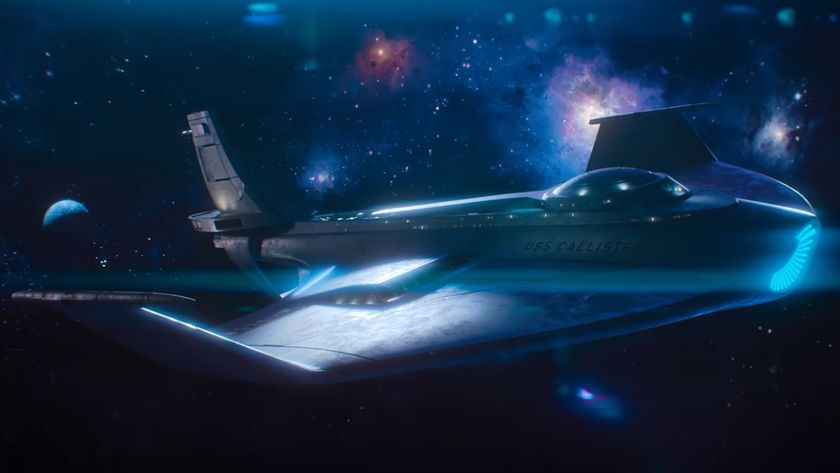'Valentine Rose' Nebula Blooms in Deep Space (Photo)
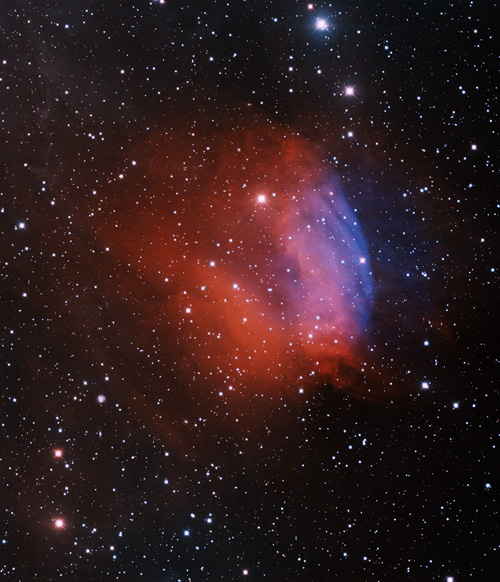
A strange nebula in deep space shines like a cosmic rose in a new photo unveiled just in time for Valentine's Day.
The new image, released Wednesday (Feb. 13) by the National Optical Astronomy Observatory, may look like a wispy space flower, but it is actually an odd planetary nebula called Sh2-174.
A planetary nebula is one of the last stages of life for most mid-sized stars. Once a star runs out of fuel, it begins to collapse in on itself, creating the clouds of red and blue in the photo.
As the star sheds layers, it forms into a white dwarf — a densely packed star that has the mass of the sun, but is stuffed into a volume about the size of the Earth.
"Usually the white dwarf can be found very near the center of the planetary nebula," NOAO officials said in a statement. "But in the case of Sh2-174 it is off to the right." [Valentine's Day in Space: Cosmic Photos]
The white dwarf star appears as a very blue star in the center of the blue region of gas in the new image. The off-kilter star arrangement is likely the result of interactions between the nebula and its surroundings, scientists said.
Astronomer Travis Rector, a professor of physics and astronomy at the University of Alaska in Anchorage, took this photo using a 13-foot (4 meters) telescope at the Kitt Peak National Observatory in Tucson, Ariz. He used four different filters designed to approximate colors that the human eye can see.
Get the Space.com Newsletter
Breaking space news, the latest updates on rocket launches, skywatching events and more!
The strange positioning of the white dwarf probably has something to do with the way the nebula is interacting with the interstellar medium, NOAO officials said. The white dwarf is the bright prick of light in the middle of the blue gas on the right side of the picture.
The new NOAO image is not the only space Valentine's Day offering for romantically inclined astronomy buffs.
Space fans can send out electronic Valentine's Day cards with a space twist courtesy of the European Space Agency and NASA's Chandra X-ray Observatory.
The European Space Agency space Valentine's Day cards include a collection of 15 celestial e-cards with images ranging from a satellite view of a heart-shaped lake to a dazzling rocket launch soaring into the sky like Cupid's arrow.
The Chandra X-ray Observatory valentines include stunning e-cards of cosmic scenes in X-ray light, since the space telescope scans the universe in wavelengths of light invisible to the human eye.
You can follow SPACE.com staff writer Miriam Kramer on Twitter @mirikramer. Follow SPACE.com on Twitter @Spacedotcom. We're also on Facebook & Google+.
Join our Space Forums to keep talking space on the latest missions, night sky and more! And if you have a news tip, correction or comment, let us know at: community@space.com.

Miriam Kramer joined Space.com as a Staff Writer in December 2012. Since then, she has floated in weightlessness on a zero-gravity flight, felt the pull of 4-Gs in a trainer aircraft and watched rockets soar into space from Florida and Virginia. She also served as Space.com's lead space entertainment reporter, and enjoys all aspects of space news, astronomy and commercial spaceflight. Miriam has also presented space stories during live interviews with Fox News and other TV and radio outlets. She originally hails from Knoxville, Tennessee where she and her family would take trips to dark spots on the outskirts of town to watch meteor showers every year. She loves to travel and one day hopes to see the northern lights in person. Miriam is currently a space reporter with Axios, writing the Axios Space newsletter. You can follow Miriam on Twitter.
